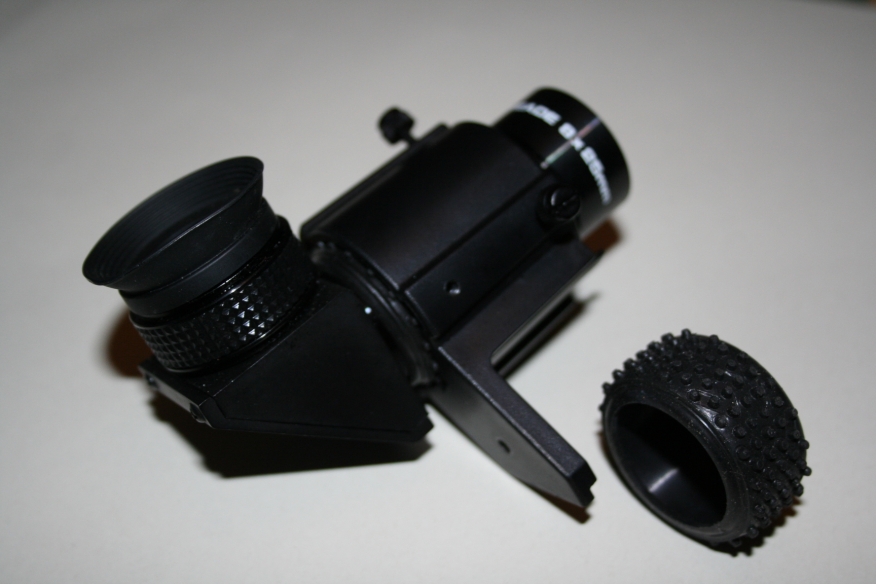


For the bracket I used the type of clear perspex that can be bought in DIY stores in sheets. It's rigid, easy to cut and can be glued with a good epoxy resin. I sprayed the finished bracket black, it looks better but it's hard to photograph!
One end of the bracket fits inside the original finder bracket and is secured with a nylon bolt and nut to protect the plastic. The other end has a circular hole which fits over the plastic suround of the screw thread used to fit the finder scope to the ETX. The extension has to be removed to store the ETX in its case so the screw has a non slip washer and a tap washer to make it easy to handle in the cold and dark.



At first I tried a straight flat bracket but it flexed too much to be usable. Therefore I glued two fins at right angles. One rests on back of the OTA the other fits under the slot used by the original finder. To make sure the bracket did not crack at low temperatures I glued right-angled strips of plastic along the joins. It works well and once the finder is zeroed in it works fairly well.


















 Visitors since 17th Nov 2007
Visitors since 17th Nov 2007